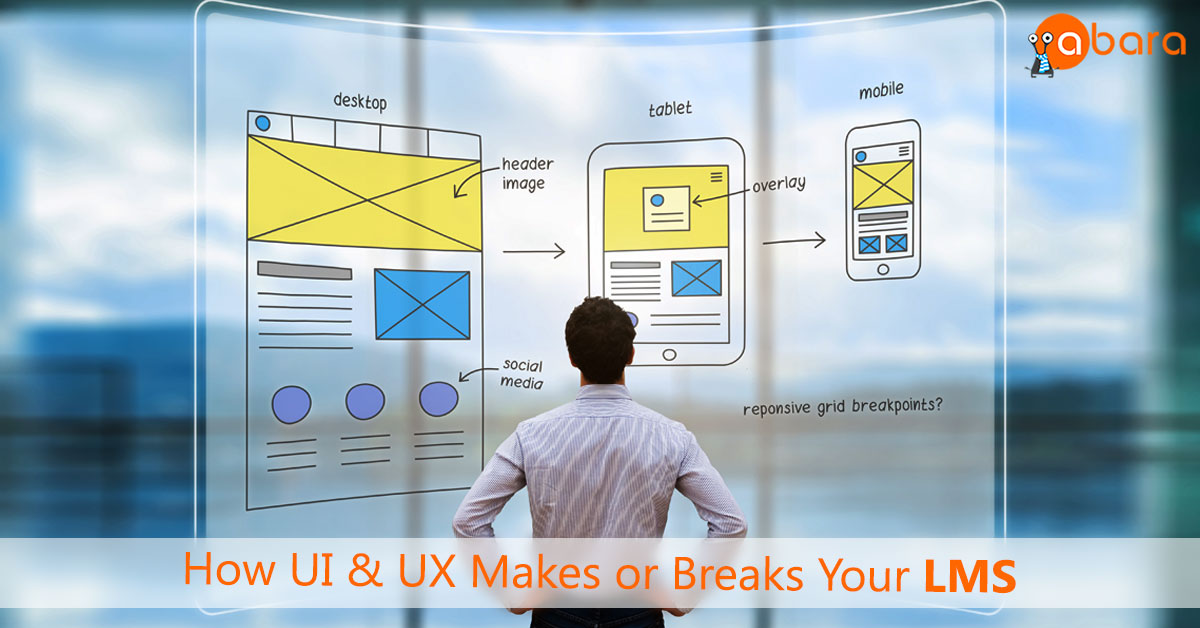The LMS is an interactive system, and like any interactive system, ease in navigation and usability play a defining role in its success. The UI & UX of an LMS is responsible for how we, the users, perceive this system. A poor UI (user interface), cluttered and dated in design, will often leave the system aesthetically limp. A poor UX (user experience) with too many clicks to make the system work and complicated navigation options, stops users from interacting with the system completely. Using it only when absolutely required. A Brandon Hall survey stated that 50.6% organizations find poor UI & UX a barrier between a satisfied learning experience and an average, poor learning experience.
The idea of owning an LMS is not about using it only when required. It is about creating a continuous culture of learning and development. Also, it’s about employees and management longing to train themselves using this system. Therefore, an interactive system like the LMS needs an aesthetically pleasing UI and a crisp, functional UX.
In this article, we’ll cover some driving forces behind why these two factors contribute to a successful LMS implementation. More importantly, how to simplify its usage in an organization. And, when selecting an LMS, from the UI & UX point of view, what you as the buyer must look for in a system.
On this Page
What Makes an LMS’s UI and UX Good?
Too Many Features Clutter the Interface
As a first-time buyer, having a variety of features that make up your LMS, may sound like a good idea. However, it will only add to the list of functions you, the user/administrator, have to understand before you make good use of the LMS.
Understanding features that are a must have, which help in addressing your training needs. Then proceed to select an LMS that has all of them and one that makes operating the LMS considerably easy.
A dashboard/control panel with only the features you need, while avoiding needless features, allows for quick administration. The LMS administrator can spend more administrating and less time making sense of each function in front of them.
From the learners’ point of view, too many functions are nothing but distractions and act as a hindrance. The ability to start and complete training activities with ease is the key. As an organization looking to create a learning and development environment, this is the last thing you want.
Seamless Navigation
The navigation options to help move through the system must be simple and straightforward. This keeps your learners interested and engaged.
Good navigation in an LMS is defined as the least number of clicks required to complete an action.
This becomes twice as important from the administrator’s point of view. Especially when assigning courses and setting up training initiatives.
Future-Proofing the LMS UI and UX
As an organization, implementing an LMS is a long-term investment. The efforts to integrate existing systems, upload user data, and set up courses should be taken into consideration. Thus, ensuring your UI & UX design is future-proofed and the LMS possesses the ability to integrate with the latest technology is important.
A future proofed UI and UX design will remain appealing, as other systems like social media, applications, and other software improve their design.
With exposure to these new systems, whose UI & UX may be advanced, users will automatically avoid an LMS whose UI & UX design is not future-proofed as they consider this to be outdated and difficult to use.
Mobile Phone Integration
There is no function of the LMS where the UI & UX matters more than the ability to use the LMS on your mobile device. With the number of mobile phone users expected to cross 5 billion globally by 2020, it is absolutely important for you, the buyer, to understand how a good UI & UX design of the LMS on mobile phones is important.
Mobile phones favor LMSes that have a clutter-free UI and a flawless UX. Reduced size of the screen and the need to train on the move, requires the LMS to be a lean and navigable system. LMSes with needless features that take time to open on a mobile device defeat the purpose of mobile learning. You need a mobile LMS with the ability to train anytime, anywhere.
Furthermore, mobile phone technology is rapidly pushing its boundaries. A mobile-integrated LMS must possess the ability to incorporate these technologies to further enhance the learning experience. Modern features such as swiping, 3D touch, eye tracking and facial recognition are all factors which may one day increase the quality of the UI & UX.
Consistent UI & UX with less frequent changes creates a feeling of familiarity among users. This plays an important role when administrators set up courses and training initiatives. It also helps in reducing the need to rely on technical support from the vendor. Learners who perceive the LMS as a familiar and easy-to-use system are more likely to engage in self-training.
Whether your LMS is mobile responsive or it has a native mobile app, the idea is that few but important features are a lot.
The lack of a native mobile app will create issues as learners try to access the LMS on their mobile browsers. Ideally, look for an LMS with a native iOS and Android mobile app. Also, ensure the LMS is not just running a mobile responsive version inside a shell of an app. The app should genuinely be designed for a mobile first experience.
Contact us to better understand how Abara LMS is a mobile-first LMS with a clean UI and crisp UX.


